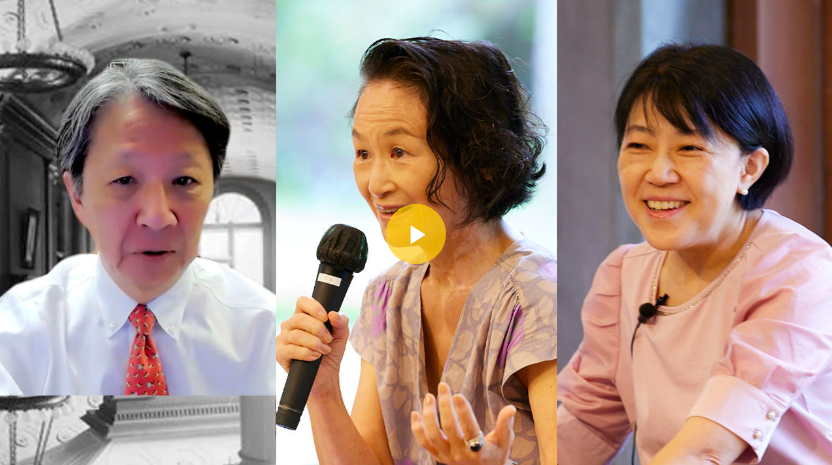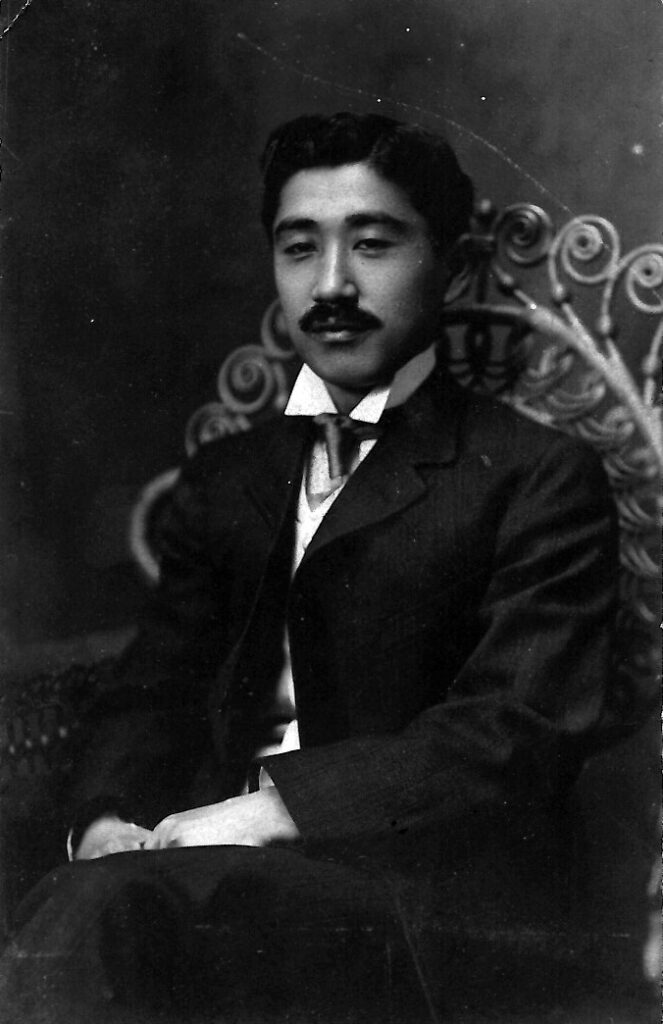1922 Gacho-kai Exhibition
1922 Gacho-kai Exhibition Fig. 5. The Gacho-Kai group photo at the exhibition site. In the center of the front row is Kotato Gado(T.K. Gado), and Yasuo Kuniyoshi is on the right side of the front row, facing sideways. Eitaro Ishigaki is on the far left in the back row, Kyohei Inukai is second from the left in the second row, and Toshi Shimizu is fourth from the left in the back row. The art styles of the New York Japanese Art Association artists ranged from Western paintings to applied arts. This was probably because many Japanese artists at the time were supported by Japanese companies in the area. Later, the […]
1917 - 1918
紐育美術日本協会の展覧会
Located on the East Coast of the United States, New York City was an immigration hub for Europeans that prospered as a center of economy, industry, and culture at the end of the 19th century. In the early 20th century, a Japanese community formed there which mainly consisted of government officials and business people. However, artists from art schools in Japan were also drawn to NYC as a temporary relay point to Europe, as were Japanese artists studying in American art schools who had previously immigrated for work. Around 1915, these artists formed a group called the New York Nihon Bijutsu Kyokai (New York Japanese Art Association). According to a […]
キュレーター・トーク
キュレーター・トーク
参考文献
Credits and References http://www.ancestry.com Baigell, Matthew and Williams, Julia. Artists Against War and Fascism. (New Jersey: Rutgers University Press 1986). Baron, Herman. “Writings and Notes: A.C.A. Uptown”, Herman Baron papers, circa early 1950s. unpublished typescript, A.C.A. Galleries records,1917-1963. Archives of American Art, Smithsonian Institution, Washington, DC. ―――.Undated, correspondence, “A.C.A. gallery circa, 1936-1940”.manuscript. in Max Weber papers. Archives of American Art, Smithsonian Institution, Washington, DC. Chang, Gordon H., Johnson, Mark Dean, Karlstrom, Paul J. and Spain, Sharon, eds. Asian American Art, a history 1985-1970 (Stanford: Stanford University Press, 2008). Chuzo Tamotzu. Transcript, September 3, 1964. Oral history interview with Chuzo Tamotzu. Archives of American Art, Smithsonian Institution, Washington, DC. Clark. Marlor. […]
画像資料一覧
ARCHIVE of Artwork and Reviews AllCh. 1Ch. 2Ch. 3Ch. 4Ch. 5Ch. 6Ch. 7 Image Source: Image Source: Image Source: Image Source: Image Source: Image Source: Image Source: Image Source: Image Source: Image Source: Image Source: Image Source: Image Source: Image Source: Image Source: Image Source: Image Source: Image Source: Image Source: Image Source: Image Source: Image Source: Image Source: Image Source: Image Source: Image Source: Image Source: Image Source: Image Source: Image Source: Image Source: Image Source: Image Source: Image Source: Image Source: Image Source: Image Source: Image Source: Image Source: Image Source: Image Source: Image Source: Image Source: Image Source:
展覧会
Japanese Artists’ Activities and Exhibits through newspaper articles, exhibition catalogs, and images of the artworks. 1917-1918 Exhibitions of the Japanese Art Association Learn More > 1922 Gacho-kai Exhibition Learn More > 1920s The Salons of America and the Society of Independent Artists Exhibition Learn More > 1927, 1935, 1936 The New York Shimpo and the Japanese Artists Exhibition Learn More > The Great Depression and Japanese Artists Learn More > 1936-1941 American Artists’ Congress and Exhibition of the Municipal Art Committee Learn More > 1945 Outbreak of War between Japan and the U.S. Learn More >
HOME
Japanese Artists in New York City – Artistic Traces from the 1910s to the 1940s – Main Menu Introduction Visit Exhibits Timeline Image Archive References Curator Talks Introduction The first exhibition of the Society of Independent Artists in 1917 is probably best known for the controversial “Fountain” by Marcel Duchamp. At this non-juried, non-prize-awarding exhibition, Japanese artists who were active in New York at the time also exhibited a number of works. Some of these artists, such as Yasuo Kuniyoshi and Isamu Noguchi, have become quite well known and are featured frequently in art museums to this day. When Kuniyoshi and Noguchi were working in pre-WWII New York however, there […]
「明治モダン:女性教育の今と昔」パネルディスカッション

“Meiji Modern: What Women’s Education Means Then and Now” Panel Discussion This event, presented by Asia Society Japan, featured a moderated panel discussion at The International House of Japan in Tokyo in person and online on August 28, 2023. Discussion focused on the significance of women’s education in Japan since the time the country was modernizing 150 years ago. Digital Museum of the History of Japanese in New York Founding Board Chair Dr. Nick Homma spoke about the first Japanese women sponsored by the Meiji government to study abroad in the United States. Former International Christian University President Dr. Junko Hibiya discussed gender issues that continue today. The discussion was […]
Norio Araki

Spirit and Sacrifice Beyond the Diamond
Spirit and Sacrifice Beyond the Diamond: 150 Years of Japanese Baseball Courtesy of the Japanese Baseball Hall of Fame and Museum. There had been no greater agency in bringing our different races together than our nation’s game, baseball. Baseball is our real melting pot. – Frederick Lieb, American sportswriter and baseball historian (1923) About The Exhibit In 2022, Japan celebrated baseball’s sesquicentennial – the 150th birthday of a national pastime and obsession in the Land of the Rising Sun. What started as a school sport in Tokyo has forged a path for many Japanese players to make it to the Major Leagues, with names such as Ichiro, Matsui, Darvish, Tanaka, […]

